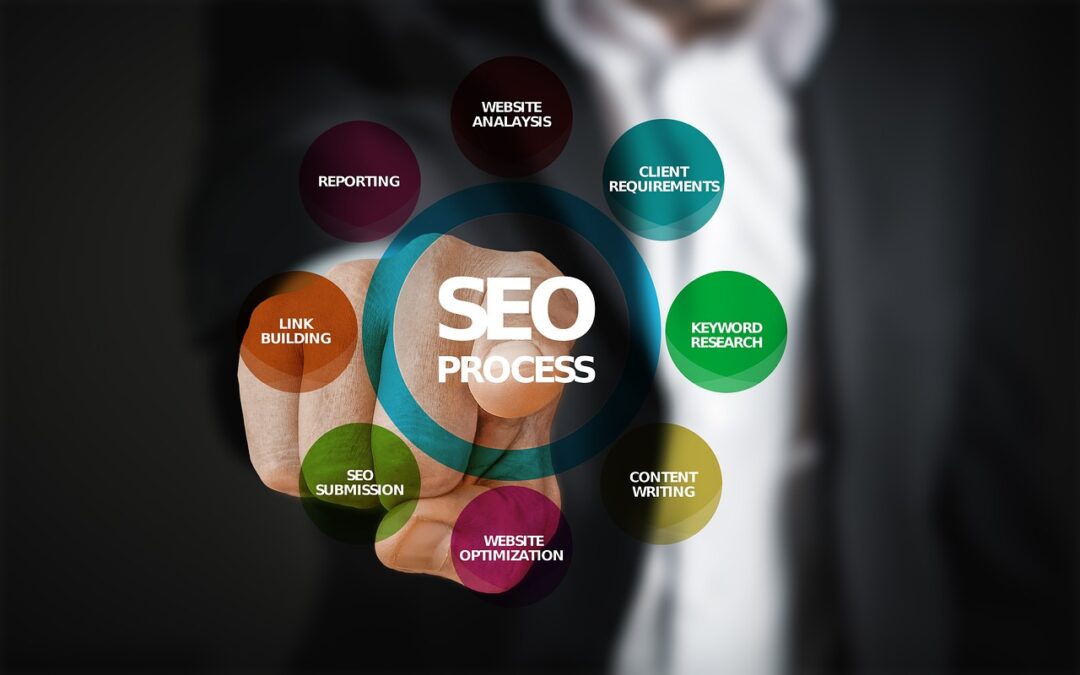In the world of SEO, on-page optimization is crucial. It’s like setting the stage for a grand performance. Without a good setup, the show won’t go as planned.
What Is On-Page SEO?
Contents
- 1 Title Tags: The Front Door of Your Content
- 2
- 3 Meta Descriptions: Your Page’s Elevator Pitch
- 4 Header Tags: Organizing Your Content
- 5 URL Structure: Making It Easy to Find
- 6 Image Optimization: Making Images Work for You
- 7 Internal Linking: Connecting Your Content
- 8 Mobile Optimization: Catering to Mobile Users
- 9 Page Speed: Keeping It Quick
- 10 Content Quality: Creating Valuable Content
- 11 User Experience: Enhancing Engagement
- 12 Schema Markup: Enhancing Search Results
- 13 Social Sharing: Amplifying Your Reach
- 14 Regular Monitoring and Updates: Staying Ahead
- 15 Transform Your Vision: Putting It All Together
- 16 FAQs
On-page SEO involves optimizing elements on your website to improve search engine rankings and user experience. This includes everything from content to HTML tags.
Why It Matters:
- Search Engines: They use on-page signals to understand your content.
- Users: A well-optimized page provides a better experience.
Title Tags: The Front Door of Your Content
Crafting Effective Title Tags
Title tags are like the sign outside a store. They should be clear and enticing.
Best Practices:
- Use Keywords: Include primary keywords early.
- Be Specific: Clearly describe the content of the page.
- Keep It Concise: Aim for 50-60 characters.
Examples of Great Title Tags
- “10 Simple Tips for Effective SEO”
- “How to Optimize Your Website for Search Engines”

Guide to On-Page SEO Best Practices for Effective Website Optimization
Meta Descriptions: Your Page’s Elevator Pitch
What Is a Meta Description?
Think of the meta description as a movie trailer. It should grab attention and entice people to click.
Tips for Crafting Meta Descriptions:
- Include Keywords: Use relevant keywords naturally.
- Be Persuasive: Highlight what makes your content valuable.
- Keep It Under 155 Characters: This ensures it’s not cut off in search results.
Examples of Effective Meta Descriptions
- “Discover 10 easy SEO tips to boost your website’s rankings and attract more visitors.”
- “Learn how to improve your site’s SEO with these simple, actionable strategies.”
Header Tags: Organizing Your Content
Importance of Header Tags
Header tags (H1, H2, H3, etc.) are like the chapters in a book. They help organize content and make it easier to read.
Best Practices:
- H1 Tag: Use one H1 tag per page. Include your main keyword.
- H2 and H3 Tags: Use them to break down content into sections and subsections.
- Be Hierarchical: Maintain a clear structure.
Examples of Header Tags
- H1: “Complete Guide to On-Page SEO Best Practices”
- H2: “Understanding Title Tags”
- H3: “Crafting Effective Title Tags”
URL Structure: Making It Easy to Find
Why URL Structure Matters
URL structure is like the address of your home. It should be clear and easy to follow.
Best Practices:
- Include Keywords: Use relevant keywords in URLs.
- Keep It Simple: Avoid unnecessary words and characters.
- Use Hyphens: Separate words with hyphens, not underscores.
Examples of Good URLs
Image Optimization: Making Images Work for You
Importance of Image Optimization
Optimized images are like well-chosen props in a play. They enhance your content without slowing down the page.
Best Practices:
- Use Descriptive File Names: Include keywords if possible.
- Add Alt Text: Describe the image for accessibility and SEO.
- Compress Images: Reduce file size without losing quality.
Examples of Alt Text
- “Image of a computer screen displaying SEO tools”
- “Diagram of on-page SEO elements”
Internal Linking: Connecting Your Content
Benefits of Internal Linking
Internal links are like pathways through a park. They help visitors navigate and find related content.
Best Practices:
- Link to Relevant Pages: Use descriptive anchor text.
- Avoid Overloading: Don’t use too many links on one page.
- Use a Logical Structure: Make sure links make sense.
Examples of Internal Links
- “Read more about keyword research here.”
- “Check out our guide on content optimization.”
Mobile Optimization: Catering to Mobile Users
Why Mobile Optimization Is Essential
Mobile optimization is like making sure your store looks good on all devices. Many users browse on their phones, so your site needs to be mobile-friendly.
Best Practices:
- Responsive Design: Ensure your site adjusts to different screen sizes.
- Fast Loading Times: Optimize images and scripts for speed.
- Easy Navigation: Make sure buttons and links are easily clickable.
Examples of Mobile-Friendly Features
- Responsive Layouts: Adjust automatically to screen size.
- Touch-Friendly Elements: Large buttons and links.
Page Speed: Keeping It Quick
Importance of Page Speed
Page speed is like the pace of a race. Faster is always better.
Best Practices:
- Optimize Images: Compress without losing quality.
- Minimize HTTP Requests: Reduce the number of elements on your page.
- Use Caching: Store frequently accessed data to speed up load times.
Tools for Measuring Page Speed
- Google PageSpeed Insights
- GTmetrix
Content Quality: Creating Valuable Content
Why Quality Content Matters
Content quality is like the core of your message. It should be engaging, informative, and valuable.
Best Practices:
- Write for Your Audience: Understand their needs and interests.
- Include Keywords Naturally: Don’t overstuff, but use them meaningfully.
- Update Regularly: Keep content fresh and relevant.
Examples of High-Quality Content
- How-to Guides: Detailed instructions on solving problems.
- In-Depth Articles: Comprehensive coverage of topics.
User Experience: Enhancing Engagement
Importance of User Experience
User experience is like the ambiance of a restaurant. It impacts how visitors feel about your site.
Best Practices:
- Easy Navigation: Simple and intuitive menu.
- Clear Calls to Action: Direct visitors on what to do next.
- Readable Fonts: Choose fonts that are easy to read.
Examples of Good User Experience
- Clean Design: Minimal distractions.
- Accessible Features: Easily navigable site.
Schema Markup: Enhancing Search Results
What Is Schema Markup?
Schema markup is like adding extra information to your content. It helps search engines understand your page better.
Best Practices:
- Use Structured Data: Implement schema types relevant to your content.
- Test Your Markup: Use tools like Google’s Structured Data Testing Tool.
- Stay Updated: Follow updates to schema types.
Examples of Schema Markup
- Article Schema: For blog posts and news articles.
- Product Schema: For e-commerce sites.
Social Sharing: Amplifying Your Reach
Why Social Sharing Is Important
Social sharing is like spreading the word about a party. It helps increase your content’s visibility.
Best Practices:
- Add Social Sharing Buttons: Make it easy for users to share.
- Create Shareable Content: Engaging and interesting content.
- Encourage Sharing: Include calls to action for sharing.
Examples of Social Sharing Strategies
- Promote on Social Media: Share your content on various platforms.
- Include Shareable Quotes: Highlight key points for easy sharing.
Regular Monitoring and Updates: Staying Ahead
Importance of Monitoring and Updating
Regular updates are like routine maintenance for a car. They keep your site running smoothly.
Best Practices:
- Track Performance: Use analytics tools to monitor traffic and engagement.
- Update Content: Regularly refresh content to keep it relevant.
- Fix Issues Quickly: Address any SEO or usability problems.
Tools for Monitoring
- Google Analytics
- SEMrush
Transform Your Vision: Putting It All Together
Implementing these on-page SEO best practices will set your site up for success. Think of it as building a sturdy foundation for a house. Each element plays a crucial role in how well your site performs.
FAQs
1. What is on-page SEO?
On-page SEO involves optimizing elements on your website to improve search engine rankings and user experience.
2. How important are title tags for SEO?
Title tags are very important. They help search engines understand your content and attract clicks from users.
3. What is schema markup and why should I use it?
Schema markup adds extra information to your content, helping search engines understand it better and improve search result visibility.
4. How can I improve my page speed?
You can improve page speed by optimizing images, minimizing HTTP requests, and using caching.
5. Why is mobile optimization crucial?
Mobile optimization ensures your site looks and works well on mobile devices, which is important because many users browse on their phones.

